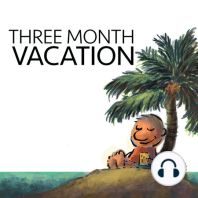4 min listen

Craft Amazing Stories For Business - Part Two
Craft Amazing Stories For Business - Part Two
ratings:
Length:
16 minutes
Released:
Dec 10, 2014
Format:
Podcast episode
Description
Storytelling isn't an art. It's a science. Every kid knows how to tell stories. And it's cute to be a storyteller when you're a kid. But when you put structure to writing and storytelling you take it from science to art. Find out how this works with story. To find more podcast options, go to http://www.psychotactics.com/podcast To get a beautiful headline report on "Why Headlines Fail", go to http://www.psychotactics.com Transcript: Sean D'Souza:Hi. This is Sean D'Souza from psychotactics.com. And you are listening to the three month vacation podcast. This podcast isn't some magic trick about working less, instead it's about how to really enjoy your work and enjoy your vacation time. Most stories start up with once upon a time, well at least the stories that we learned when we were kids. Well, imagine if Goldilocks and the Three Bears started right in the middle. That's what we're going to cover in this section. We're going to start off with stories that start right in the middle. How to keep stories fresh and engaging? We're going to look at the 90% principle and we will repeat that several times in this series in different ways, but you'll learn the 90% principle. Then, there's counterflow. What is counterflow? Flow and counterflow, but what does counterflow involve? Finally, the pivotal moment, how to turn the story on a dime? Let's get into story telling. Let's start off with, how to keep your stories fresh and engaging? If you ask a photographer to take a picture of say a glass. Well most of us will just stand up, take our phones out and take a picture from wherever we are standing. We don’t go close to the glass. We don’t bother to see the angle of the glass, we don’t bother about anything. We just rip out the phone, rip out the camera, take a picture and we are done. That is not interesting. From a photographers point of view it is well you want me to take a picture of this glass, what kind of lighting, which angle. When you look at the glass there are about a million permutations, the type of light, the type of color, the type of angle. All these things come into play when a photographer is taking a picture of a single glass just an ordinary glass, and this is how you have to approach your content. When you are talking just about anything you have to understand what I am really going at. What angle am I going at? Why kind of lighting am I portraying? With story telling you have to know what is it that you are talking about? If you are talking about something that is immutable, insurmountable, well you have things like the Himalayas, and you have these mountains that cannot be moved. You also have other problems, other things that personal stories that talk about things that you could not move, that wouldn’t budge, so you have case study where maybe a recording company didn’t budge and the Beetles just had to find another way. Once you have got that kind of understanding of well, what I am really saying here. What is that word? What is that phrase? No you can keep your content fresh and engaging. You can tell the same story, that same glass and look at it at different angles and different light and different ways and you can approach that same story a million different ways and customers never get fed up. However, you also have to understand that we the storytellers get tired of our stories long before customers do. You look at someone like say Frank Sinatra, and he is saying, say ‘New York, New York’ and every time he went out people were happy to listen to the new songs, but they wanted New York, New York. They wanted him to sing that song or they wanted him to sing ‘My Way.’ They wanted those things that they could attach themselves to understand, and so yes there are million ways to represent a story or a million ways to represent a sales pitch but also remember that people love the way that you have always done it, so don’t just change for the sake of changing. I
Released:
Dec 10, 2014
Format:
Podcast episode
Titles in the series (100)
Book Recommendation: The Talent Code: Why did we have so many great artists, painters and sculptors in the Renaissance? Why does Brazil produce so many great soccer players? Is slow learning better than fast? Learn more by reading "The Talent Code" by Daniel Coyle. / / For more:... by The Three Month Vacation Podcast